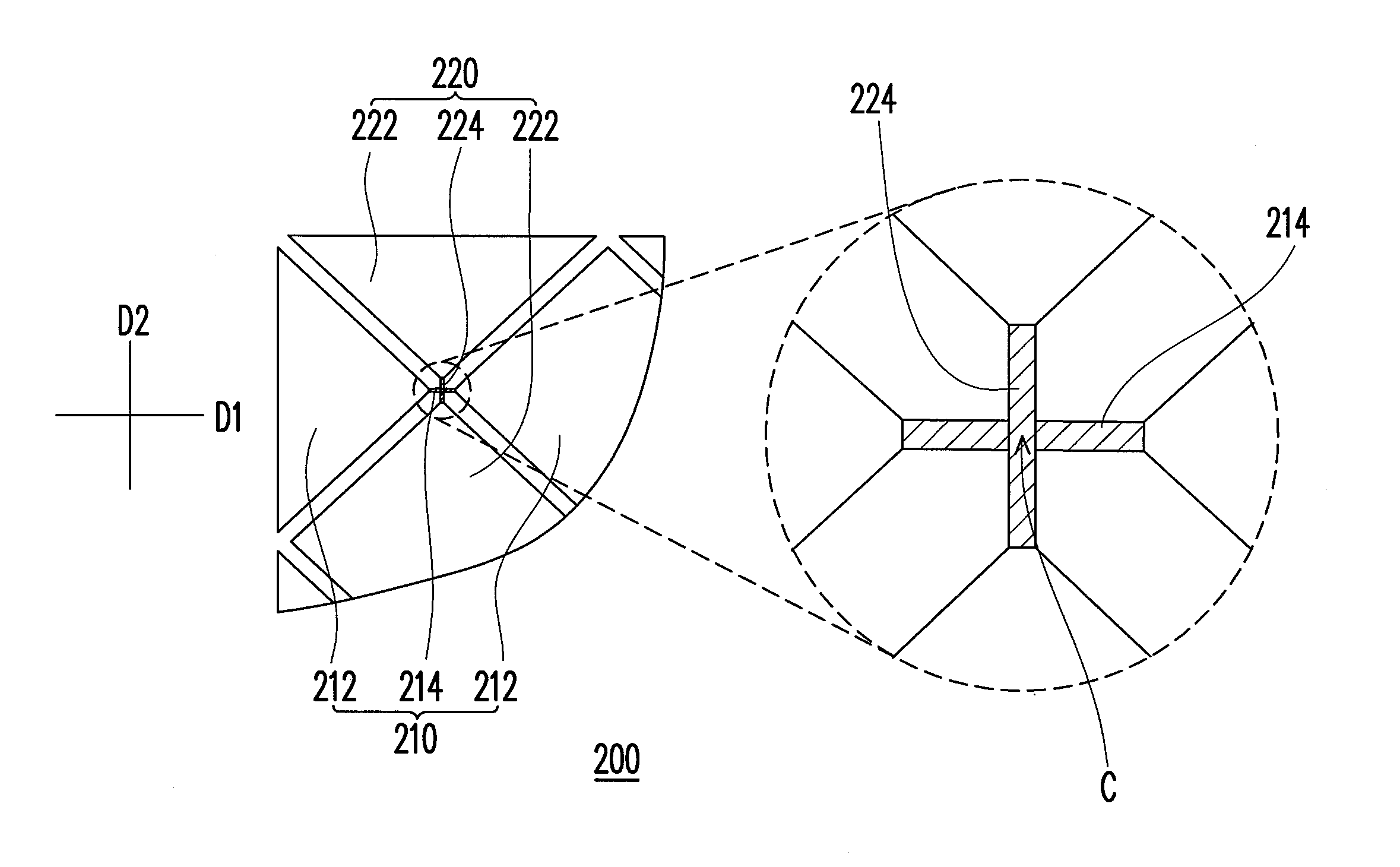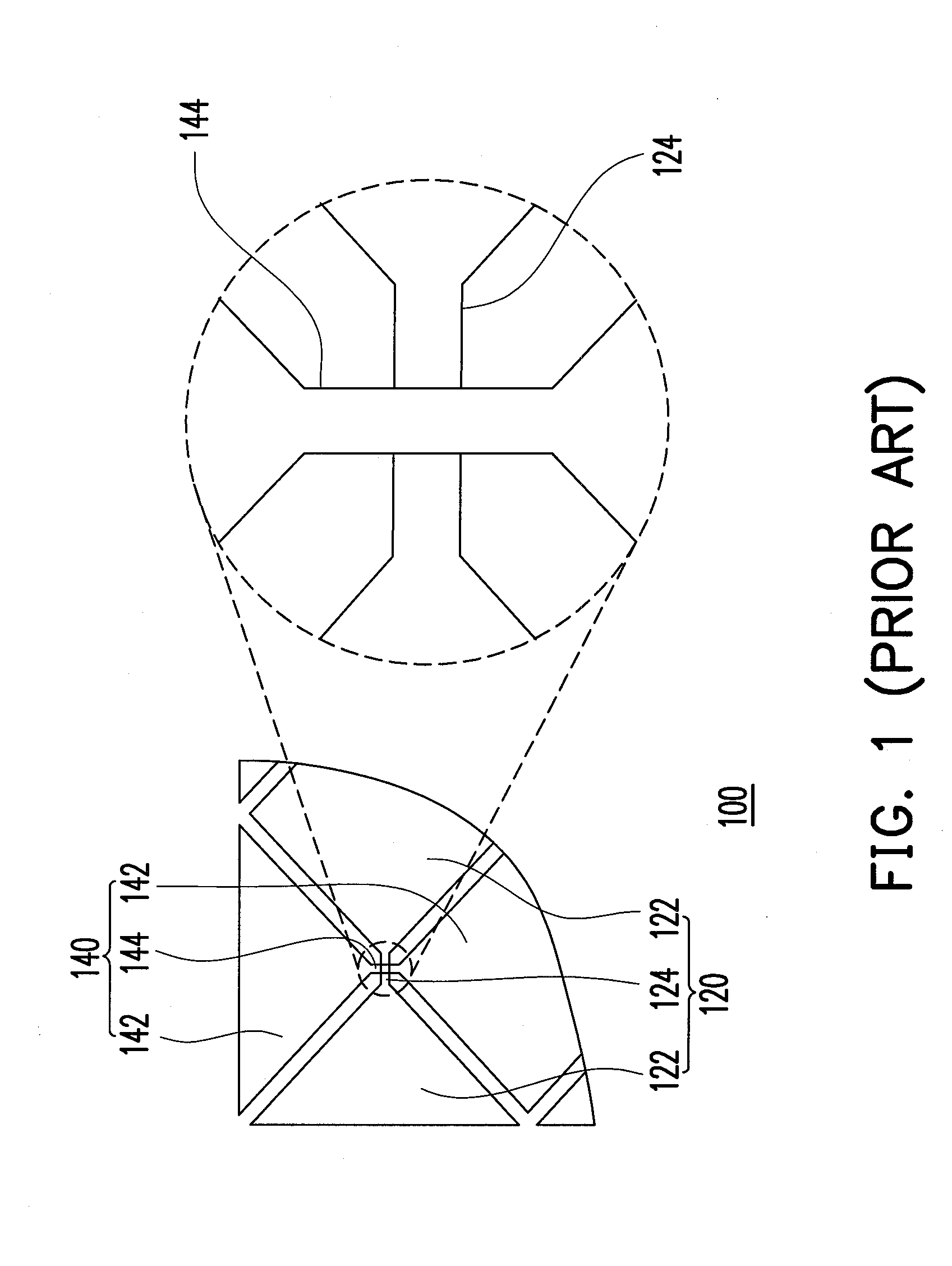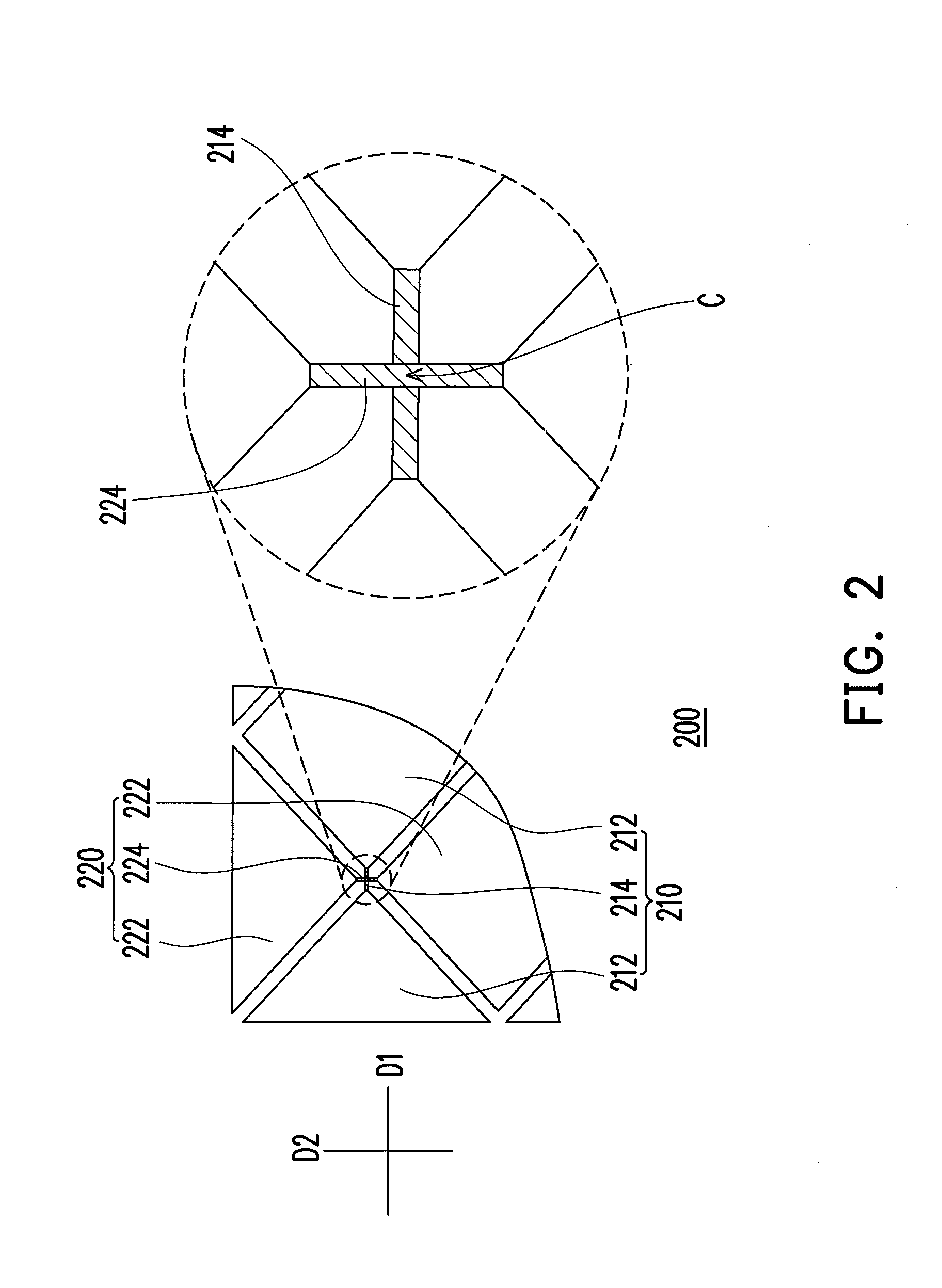Touch panel
a touch panel and touch technology, applied in the field of touch panels, can solve the problems of increasing the impedance of the bridge line, disadvantageous to touch sensing signal transmission, and inability to calculate the control circuit, so as to achieve satisfactory touch sensitivity, reduce the resistance, and reduce the line width of the connecting pattern in the intersection region.
- Summary
- Abstract
- Description
- Claims
- Application Information
AI Technical Summary
Benefits of technology
Problems solved by technology
Method used
Image
Examples
first embodiment
[0020]FIG. 2 shows a touch panel according to the present invention. Referring to FIG. 2, a touch panel 200 has at least one first sensing string 210 and at least one second sensing string 220. The first sensing string 210 is arranged in a first direction D1. The second sensing string 220 does not contact the first sensing string 210 and is arranged in a second direction D2. The first direction D1 is intersected with the second direction D2. In practice, the first direction D1 and the second direction D2 can be perpendicular to each other, or they can be intersected at an angle other than 90 degrees or 0 degree. According to the present embodiment, the first direction D1 and the second direction D2 are perpendicular to each other, for example.
[0021]The first sensing string 210 includes a plurality of first sensing pads 212 and at least one first connecting pattern 214. The first sensing pads 212 are electrically connected with one another. The first connecting pattern 214 is located...
second embodiment
[0029]FIG. 3 shows a touch panel according to the present invention. Referring to FIG. 3, the touch panel 300 is generally the same as the touch panel 200. The first sensing string 210 of the touch panel 300 further includes at least one first auxiliary pattern 216, and the second sensing string 220 further includes at least one second auxiliary pattern 226. The first auxiliary pattern 216 is connected between the first sensing pads 212, and the second auxiliary pattern 226 is connected between the second sensing pads 222.
[0030]In steps of a relevant process of the touch panel 200 or the touch panel 300, the sensing strings 210 and 220 are formed on a substrate (not shown). Herein, adhesion of the low-resistivity metallic materials to the substrate (not shown) is not quite satisfactory. Therefore, in the present embodiment, the first connecting pattern 214 is directly disposed on the first auxiliary pattern 216, and the second connecting pattern 224 is directly disposed on the secon...
third embodiment
[0034]FIG. 4 shows a touch panel according to the present invention. Referring to FIG. 4, a touch panel 400 is substantially derived from the design of the touch panel 300. In the touch panel 400, a first auxiliary pattern 416 is divided into a first section 416A and a second section 416B. A second auxiliary pattern 426 is also divided into a first section 426A and a second section 426B. The line widths of the first sections 416A and 426A are larger than those of the second sections 416B and 426B. In substance, the first sections 416A and 426A are respectively located outside a region where the first connecting pattern 214 and the second connecting pattern 224 are located. The second sections 416B and 426B are respectively located within the region where the first connecting pattern 214 and the second connecting pattern 224 are located.
[0035]The line widths of the second sections 416B and 426B are actually smaller than or equal to those of the first connecting pattern 214 and the se...
PUM
 Login to View More
Login to View More Abstract
Description
Claims
Application Information
 Login to View More
Login to View More - R&D
- Intellectual Property
- Life Sciences
- Materials
- Tech Scout
- Unparalleled Data Quality
- Higher Quality Content
- 60% Fewer Hallucinations
Browse by: Latest US Patents, China's latest patents, Technical Efficacy Thesaurus, Application Domain, Technology Topic, Popular Technical Reports.
© 2025 PatSnap. All rights reserved.Legal|Privacy policy|Modern Slavery Act Transparency Statement|Sitemap|About US| Contact US: help@patsnap.com



